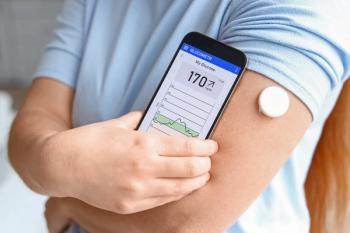
- October 2022 Immunization Supplement
Here We Go Again: Projecting and Prognosticating for the 2022-2023 Fall/Winter Season in the Time of Endemic COVID-19
Loosened restrictions will likely create a more pronounced influenza season this fall.
Ramping Up for a More "Normal" Influenza Season
Preorders for influenza vaccine doses are in, staff is at the ready, and we await this year’s strains to hit our shores. It’s been a while since we’ve had a “normal” influenza season, with COVID-19 mitigations largely in place over the past 2 seasons. Over the past few years, not only in the United States but around the world, we’ve been attempting to wear masks, wash hands, distance, and stay at home when sick—on a level that far exceeded our pre–COVID-19 consciousness. Now, reduced public health and social measures throughout most of the world1 align with the mindset that people are restless and ready to get out, stay out, socialize, and move freely. It’s already happened here in the United States, with a shift toward “living with the virus”2 and greatly loosened restrictions in the latest CDC guidance.3 But will this create a more pronounced influenza season this fall? Not certain, but likely.
Here Come Bivalent Boosters
We’ve been administering vaccines and boosters that were designed to elicit an antibody response against the original COVID-19 virus strain that emerged in Wuhan, China, in late 2019. New bivalent COVID-19 booster shots that just received FDA emergency use authorization are composed of half of the mRNA that codes for the spike protein of the ancestral strain and half that codes for the spike protein in the BA.4 and BA.5 Omicron variants.4 Bivalent booster shots will add to the already busy fall immunization effort. Sure, not everyone—perhaps not even half of the population—will seek them out. Yet these boosters may represent the first “bolus” immunization effort, in which a large portion of the population will seek an immunization in a relatively compact window of time. Because this immunization is “new” and more “tailored,” it’s likely to get more press and attention and be viewed as perhaps more valuable or effective than prior booster efforts. The highly infectious nature of the Omicron variants, along with their ability to cause breakthrough infections in people who are vaccinated5—although protection against severe and poor outcomes seems to be holding—may render the bivalent booster much more popular and welcomed by vaccine-hesitant or vaccine-apathetic individuals.
Pharmacy Is Currently the Site of Strong Preference for COVID-19 Vaccination
The majority of current COVID-19 vaccination administrations take place in a pharmacy.6-8 Early in the pandemic, vaccine supply was restricted and allocated based on federal government formulas and preferences to various sites of care through the jurisdictional program (states, districts, territories, and protectorates)9; later, the federal government supplied vaccines direct to pharmacy groups through the Federal Retail Pharmacy Program.10 Large mass immunization sites and health systems clinics dominated ambulatory administrations early in the pandemic, owing mostly to availability being limited to those sites, not consumer/patient preference. Now that the supply is abundant enough to allow for choice, and the population has become accustomed to the trustworthiness and convenience pharmacies provide, pharmacies are now clearly the strongly preferred site for most people to receive their COVID-19 immunizations.
Projecting Volume Based on Latest Available Data
As of early September 2022, 90% of the US population 18 years and older has received at least 1 COVID-19 dose.7 This is a remarkable accomplishment compared with other modern immunization efforts. Additionally, more than half of the population has received at least 1 booster shot (51.6%).7 The United States has maintained an annual adult influenza administration rate of approximately 45% of the population.11,12 Prior to the pandemic, about one-third of those immunizations happened in a pharmacy setting, and another one-third occurred in physician medical offices.11 Given the now-strong preference to receive COVID-19 immunizations in the pharmacy, we can expect the influenza vaccination site of preference to increase toward pharmacy as well. With the advent of new bivalent COVID-19 boosters, there’s potential for doubling or tripling (or more) of immunization activity in the pharmacy this fall compared with prior seasons.
Don't Forget About Point-of-Care Testing of Paxlovid Prescriptions
In addition to the likely immunization increases, a large proportion of the population may seek out point-of-care testing (POCT) to determine if they have influenza or COVID-19. Although mandatory testing requirements for travel, employment, or schooling have largely been dismissed compared with prior COVID-19 years, POCT testing demand is likely to be more robust than in pre–COVID-19 years. Paxlovid prescribing will continue as well. Despite some recent data on COVID-19 infection rebound and lack of benefit in younger populations, the course of treatment is expected to remain lifesaving for certain individuals and it is an important complementary service to immunization and POCT.
ABOUT THE AUTHOR
Troy Trygstad, PharmD, PhD, MBA, is the Executive Director of CPESN USA, a clinically integrated network of more than 3500 participating pharmacies. He received his PharmD and MBA degrees from Drake University and a PhD in pharmaceutical outcomes and policy from the University of North Carolina. He has recently served on the board of directors for the Pharmacy Quality Alliance and the American Pharmacists Association Foundation.
REFERENCES
1. WHO coronavirus (COVID-19) dashboard: measures. World Health Organization. Accessed September 6, 2022. https://covid19.who.int/measures
2. Sun LH, Achenbach J. CDC loosens coronavirus guidance, signaling strategic shift. The Washington Post. August 11, 2022. Accessed September 6, 2022. https://www.washingtonpost.com/health/2022/08/11/cdccoronavirus-recommendations
3. Massetti GM, Jackson BR, Brooks JT, et al. Summary of guidance for minimizing the impact of COVID-19 on individual persons, communities, and health care systems – United States, August 2022. MMWR Morb Mortal Wkly Rep. 2022;71(33):1057-1064. doi:10.15585/mmwr.mm7133e1
4. Vogel G. Omicron booster shots are coming—with lots of questions. Science. August 30, 2022. Accessed September 6, 2022. https://www.science.org/content/article/omicron-booster-shots-are-coming-lots-questions
5. Variants of the virus. Centers for Disease Control and Prevention. Updated August 11, 2021. Accessed September 6, 2022. https://www.cdc.gov/coronavirus/2019-ncov/variants/index.html
6. Popovian R. Pharmacist-administered vaccinations should be here to stay. Governing. May 11, 2022. Accessed September 6, 2022. https://www.governing.com/now/pharmacist-administered-vaccinations-should-be-here-to-stay
7. COVID data tracker: COVID-19 vaccinations in the United States. Centers for Disease Control and Prevention. Accessed September 6, 2022. https://covid.cdc.gov/covid-data-tracker/#vaccinations_vacc-peopleadditional-dose-totalpop
8. The Federal Retail Pharmacy Program for COVID-19 vaccination. Centers for Disease Control and Prevention. Reviewed August 23, 2022. Accessed September 6, 2022. https://www.cdc.gov/vaccines/covid-19/retailpharmacy-program
9. From the factory to the frontlines: the Operation Warp Speed strategy for distributing a COVID-19 vaccine. HHS. Accessed September 6, 2022. https://www.hhs.gov/sites/default/files/strategy-for-distributing-covid-19-vaccine.pdf
10. Fact sheet: President Biden announces increased vaccine supply, initial launch of the Federal Retail Pharmacy Program, and expansion of FEMA reimbursement to states. News release. The White House; February 2, 2021. Accessed September 6, 2022. https://www.whitehouse.gov/briefing-room/statements-releases/2021/02/02/fact-sheet-president-biden-announcesincreased-vaccine-supply-initial-launch-of-the-federal-retail-pharmacyprogram-and-expansion-of-fema-reimbursement-to-states/
11. Early-season flu vaccination coverage–United States, November 2018. Centers for Disease Control and Prevention. Reviewed December 14, 2018. Accessed August 29, 2022. https://www.cdc.gov/flu/fluvaxview/nifsestimates-nov2018.htm
12. Influenza vaccine coverage, adults. Centers for Disease Control and Prevention. Reviewed January 21, 2022. Accessed September 6, 2022. https://www.cdc.gov/flu/fluvaxview/dashboard/vaccination-adult-coverage.html
Articles in this issue
Newsletter
Stay informed on drug updates, treatment guidelines, and pharmacy practice trends—subscribe to Pharmacy Times for weekly clinical insights.
















































































































































































































